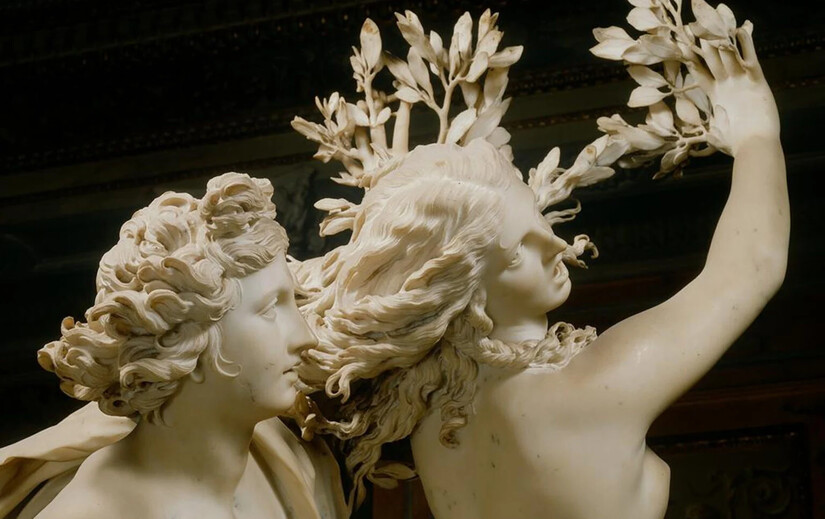Image

Who comes to mind when you think of the guitar? Hendrix? Segovia? Clapton? No doubt those (mostly) modern titans belong on any list of the greatest six-slingers to ever tune up and jam. And we’ll give them their due.
But there’s more to guitar than just the players; there’s a fascinating history of an instrument that’s as versatile as any in music — not just in its various forms and amplifications, but in its seamless integration into the canons of song composers the world over. It’s such a good story, and National Today is here to tell the colorful tale on February 11.

AXS TV’s “National Guitar Day Celebration” Scheduled For February 11 – “A Full Day Dedicated To The Instrument That Changed Music Forever”
History of National Get Out Your Guitar Day
The history of Get Out Your Guitar day is simply unable to be recorded. Ever since the first version of a guitar was created, man has desired to escape the mundane and take some time to dream. Bards and storytellers of old became the pop stars of today.
All with the ability to make music and take us along on their adventures. Whether it is the heartache of relationships or the ringing anthems of those who seek for change, the music sweeps us up and gathers us along.
Remember that joy that you had the first time someone heard you playing and recognized the song? Yeah, that is what today is about. That pure, sweet, joy in the moment. So run up to the attic or down into the basement and get that guitar out of hiding!
The guitar probably made its first appearance in 16th century Spain. These early models only had four strings and were much slimmer than the full-bodied acoustics that we enjoy today. The instrument was probably the descendent of the Spain-specific vihuela, which was a kind of local version of the lute.
Over the following three centuries, the guitar’s basic design underwent an evolution, slowly improving it from decade to decade. In the seventeenth century, artisans added a fifth string. And by the eighteenth century, we got the sixth string we know and love today.
The shape of the pegbox changed too. In the early days, it was similar to a viola. But people realized that they could get a slightly better sound out of it if they flattered and widened it, a development that led to the modern design.
There were improvements to the tuning options too. In the 1600s, musicians had to rely on clumsy metal tuning pegs to get the right pitch. But by the turn of the 19th century, engineers had replaced them with pins, often made of ivory, which could make tiny adjustments to the tone.
Early guitars didn’t have frets either. Performers would create notes by merely pushing the strings into the wooden board. However, designers noticed that they could improve the sound with the addition of metal strips placed crosswise on the neck, corresponding to various frequencies.
The guitar was a bit of a curiosity when it first appeared. People weren’t sure what to make of it. The lute and the vihuela were far more popular. However, during the 17th century, tradition string instruments went into decline. And by the start of the 19th century, they had mostly fallen out of circulation.
Part of the shift towards guitar was undoubtedly driven by early virtuoso soloists, including Fernando Sor and Joseph Kaspar Mertz. Before long, the guitar had become a staple of modern music and the instrument of choice for bringing people together for a good old-fashioned singalong.
National Get Your Guitar Out Day is dedicated to making sure that everyone can benefit from the humble guitar. The instrument has an uncanny ability to get people pumped about music.
February 11 is National Guitar Day and AXS TV is celebrating with a full day dedicated to the instrument that changed music forever. Dive into epic performances, exclusive stories, and iconic concerts with the guitar heroes that defined rock n’ roll.

History of Guitars
Many say that a man known as Lamech, who was Noah’s grandfather and the sixth grandson of Adam and Eve, designed the Arab precursor to the guitar. Lamech was apparently inspired to design the shape of the instrument, known as an oud, after hanging the body of his dead son from a tree. The Moors brought the oud with them when they invaded Southern Spain in 711 AD.
Shape From the 15th Century to Present Day
The lute came in a variety of shapes and sizes, but generally had a curved back. The instrument passed from the Egyptians to the Greeks and then onto the Romans, who took it to Europe.
The first ancient pictorial record of a lute-like stringed instrument first appeared in 3500 to 3200 BCE in Southern Mesopotamia – Iraq, which is now Nasiriyah City. The image depicts a female crouching on a boat; the position of her hands on the instrument indicates she is playing an instrument.
Long- and short-necked varieties of lutes continued to appear in pictorial records throughout Mesopotamian and Egyptian history. Metropolitan Museums of New York, Philadelphia, Cleveland and the British Museum display many examples of these pictorial records on clay tablets and papyrus paper.
The lute had evolved significantly by the end of the Renaissance – many lutes had up to 20 or 30 strings – but the lute-like shape of the instrument was fading in popularity. By the 15th and 16th centuries, musicians in Spain began to favor instruments featuring the familiar curved shape we now associate with guitars.
These guitars, known as Baroque guitars, effectively replaced the lute as the go-to stringed instrument for musicians from about 1600 to 1750. Further refinements, such as five courses of gut strings and moveable frets, made these instruments easier to play.
The vihuela, which has incurving sides that give its body an hourglass shape, became popular in Spain, Portugal and Italy during that time too. Mariachi groups still use a version of the vihuela today.
The evolution of Spanish guitars settled by the 1790s; they had the standard body type and six courses of strings that resembles the modern guitar, but were smaller. Spanish musician and guitar maker Antonio de Torres Jurado changed all that in the mid-1800s, when he created the style of guitar that gave rise to all guitars to follow. Many people consider him as “one of the single most important inventors in the history of guitar.”
His guitars featured a broadened body, thinned belly and increased curve at the waist. He also replaced wooden tuning pegs with a machined heads. His innovative approach to body design and fan bracing, which is that system of wooden struts inside the instrument, gave his classical guitars their distinctive, rich voice.
Influential Spanish guitarist Andres Segovia established Torres’ classic guitar as a concert instrument. The talented guitarist also penned complex musical compositions that we now identify as “classical guitar” music.
At about this same time, Europeans brought a steel-stringed version of the Spanish instrument when they immigrated to America. There, the modern guitar took on a new shape and a new place in history, with the invention of the flat top, archtop and modern electric guitar.

The Modern Guitars
The flat top acoustic guitar remains the most popular form of acoustic guitar, nearly two centuries after its invention. German-born American guitar maker, Christian Frederick Martin, created the flat top. Martin replaced the old-fashioned fan bracing with X-bracing to help the guitar body handle the extra stress of modern steel strings, which had posed a problem for the old Torres-style guitars.
The tight steel strings of the flat top also required the guitarists to change their playing style and use picks more often, which fundamentally changed the type of music played on these instruments. Melodies on classical guitars are precise and delicate, for example, while steel strings and picks created bright, chord-driven music. The common use of picks also triggered the evolution of the pickguard, now seen below the sound hole on most flat top guitars.
Many attribute Orville Gibson with the creation of the archtop guitar. This guitar features F-holes, arched top and back, and adjustable bridge, which increases the instruments tone and volume. Gibson created guitars that had bodies similar to cellos, which helped the instruments produce a louder sound. Jazz and country musicians quickly embraced these guitars; big bands and swing bands also used flat tops.
George Beauchamp and his partner Adolph Rickenbacker won the first patent for the electric guitar in 1931. Many other inventors and guitar makers were working on electric versions of these old instruments at about the same time. Les Paul pioneered the solid body guitar made by Gibson Guitars, for example, and Leo Fender invented the Fender Telecaster in 1951. Together, the Fender Telecaster, Gibson Les Paul and Gibson SGs helped the guitars of yesteryear evolve into the solid-body electric guitars still used today.

According to the legend, Apollo created the first guitar using this tree in memory of Daphne.
The origin of the guitar is unknown, but it is an evidence that since the late XVI century, being its golden age in the XX century, this plucked string instrument has been gaining worldwide recognition and has become a Spanish cultural icon.
The instrument has had an important evolution since its beginning in regard to its structural characteristics as well as in the materials used. Although there are several versions and theories, the most widespread belief dates it from the Middle Age as a result of the clash of the Christian and Muslim culture in the Iberian Peninsula.
The Vihuela or Latin guitar were common, having the vihuela a high prestige, but at the end of XVI century, when the contrapuntal instrumental style was abandoned, the art of the vihuela took refuge by means of being transfigured on the guitar. The order increased, so there were five strings in total, and it became a tradition at popular celebrations.
We can find important publications such as Spanish guitar of five orders, which teaches tempering and strumming (Joan Carles Amata, 1596), where the current name ‘Spanish guitar’ was already used, so its use and recognition was popularized in Europe.
Between the XVIII and XIX centuries, the sixth string is added, acquiring the current appearance, but it was not until the XIX century by means of the constructive incorporations of Antonio Torres (Almería, 1817-1892), when it was defined as we know it today, the classical form as well as the flamenco form.
In the beginner's guide Segovia, my guitar book by Andres Segovia and George Mendoza (Ediciones Montena S.A. 1980), there is a beautiful legend of Greco-Roman mythology:
Apollo, one of the Olympian gods, addressed Cupid (Eros in Greek mythology) making fun of his skills with the bow and the arrows, in addition to his singing.
Cupid, who was hurt because of the Apollo’s words, shot him a golden arrow in the heart, which caused a strong attraction for Daphne instantly, the beautiful nymph, who was daughter of Peneus (the river god), passed by. Cupid, in order to provoke the Daphne’s aversion to Apollo, drove another arrow into her heart, but this time he used the lead arrowhead.
Apollo went after Daphne, but when he finally caught up with her, she implored her father’s help, the river god, who changed her into a tree, the Laurel, which is called Daphne in Greece, and from that moment, it was a sacred tree to Apollo.
According to legend in the Book of Segovia: Apollo produced the first guitar using this tree, preserving the feminine origin by means of its curved lines of the body and its tendency to be capricious and unpredictable.
Using Laurel leaves to crown the great poets and artists.
AXS TV’s National Guitar Day Celebration is happening on day long on February 11 on AXS TV. Watch a video trailer below: